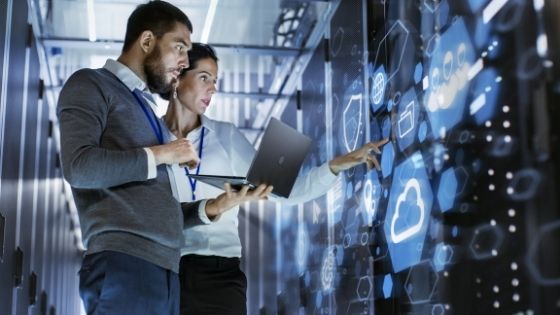Data centers have become a critical part of modern business. They store company data, run applications, and host websites. Due to their large sizes and complexity, they are often energy hogs, consuming significant amounts of power during operations. By adopting energy-efficient data center technologies, organizations can reduce energy costs, improve the sustainability of operations, increase reliability and uptime. We shall discuss strategies to make your data center more energy-efficient.
Upgrade with Magnetic-bearing Chiller Compressors
A straightforward way to achieve this is to install a centrifugal water chiller. These small chillers use centrifugal force to cool water rather than using moving parts to make the water cool. Unlike traditional systems that rely on oil lubricants, a magnetic bearing chiller reduces energy losses to friction and enhances the rate of heat transfer. Installation of this equipment is quick, with little or no disruptions to the data center.
Reduce the Air Pressure
Air pressure plays a significant role in airflow and heat transfer to the surrounding air. Energy consumption at the data centers is ordinarily proportionate to the air pressure. For example, if you reduce air pressure by one-half, your data center would use 50 percent less energy. You can also reduce air pressure by using air conditioning in the server room.
Invest in High-Efficiency UPS
Uninterruptible Power Supplies (UPS) is a battery-powered backup power supply connected to the data center circuit breaker. In the event of a power outage, the UPS automatically powers the data center equipment to continue operating at minimal energy costs. UPS contains sensors that detect power restoration, which helps to save energy by turning off the equipment that the UPS was powering. The batteries also allow the air conditioning system to be shut off, reducing the energy consumption and cost of running the data center.
Temperature Optimization
Data centers have a wide range of temperatures, from the coldest parts of the facility keeping the servers cool to the warmest areas housing the hot aisle equipment. Optimization of temperatures helps to reduce electric consumption and ensure the equipment runs at optimal levels. As more server racks are added, cooling becomes a nightmare. Arrangement of the racks such that the fronts face each other helps to improve the airflow. Installing excellent roof panels or heat pipes, which absorb heat from the air and release it into the environment at a more desirable temperature, helps in temperature optimization.
Conducting Energy Audits
Data centers run 24/7, 365 days a year, and have high energy costs. That energy must come from somewhere, and full utilization is critical to prevent energy wastes and carbon footprints. But as data center operators strive to reduce operational costs, one of their biggest challenges is keeping energy use down. One of the most underutilized energy-saving technologies in data centers is energy auditing. Energy auditing is the process of measuring and analyzing the performance of a building’s energy system to identify opportunities for improvement. This process can help data centers become more energy-efficient, which can save money and help the environment.
Deploying Intelligent Sensors
Another step to reducing data center energy consumption is identifying where the most significant energy demands originate. Many data centers overheat due to poor rack design and power distribution, which results in excess cooling. A better way to cool data centers is to deploy intelligent rack power distribution units (PDU). These devices can sense and respond to the internal temperatures in the rack, distributing the most power where it is needed most. This action allows data center operators to reduce their cooling costs while maintaining server room temperatures. Consequently, it reduces carbon footprint while maintaining the same level of cooling at the data centers.
Virtualization and Consolidation of Servers
Virtualizing the servers and storage means operating multiple servers and storage devices using a single physical machine. It reduces the number of physical servers and storage devices required and the energy consumed by those devices. It also has the benefit of improving the data center’s overall performance.
Become Energy Efficient
Achieving energy-efficient operations require data centers to perform several tasks. The tasks include collecting environmental temperatures, implementing high-efficient equipment, and tracking heating and power usage. Implementing the above strategies and tips will help your organization make the data center more energy-efficient.













